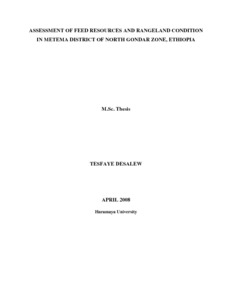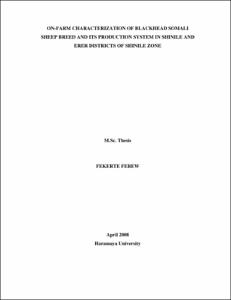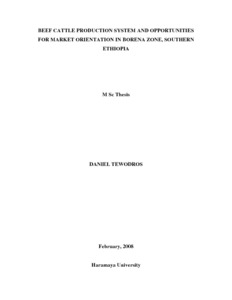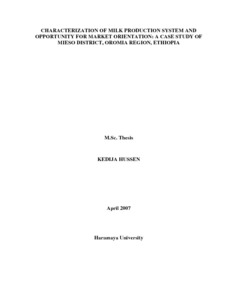Location
Vision
Haramaya University strives to be one of the leading African Universities with international reputation by 2025.
Mission
The Mission of Haramaya University is to produce competent graduates in diverse fields of study, undertake rigorous, problem solving and cutting edge researches,disseminate knowledge and technologies, and provide demand-driven and transformative community services.
Motto
The motto of Haramaya University is “Building the Basis for Development”
Goal
The goal of Haramaya University is to evolve as an autonomous and independent (academic and research institution) graduate and research university with a competitive national and international quality and relevance standards in its academic, research and community services endeavours.
Members:
Resources
Displaying 31 - 35 of 36Assessment of livestock feed resources utilization in Alaba Woreda, Southern Ethiopia
This study was undertaken in the crop and livestock production system interactions of smallholders upon fixed and fragmented land holdings in livestock and human populated area of Alaba, Southern Ethiopia with the objective of quantifying the major feed resources and evaluating the efficiency of utilizations of these feeds. General linear model (GLM) was fitted for dry matter yield of private grazing lands of the household in tonnes over covariates household grazing land size and number of households’ livestock in TLU for each type of livestock’s.
Assessment of feed resources and rangeland condition in Metema District of North Gondar Zone, Ethiopia
The study was conducted in Metema District of Amhara Region and the objectives of the study were to assess the major livestock feed resources, to analyze the chemical composition of major feeds, to assess the rangeland condition and investigate the floristic composition and dry matter biomass yields of herbaceous species in the District. The livestock feed resources were assessed by formal and informal survey and analyzed by descriptive statistics.
On-farm characterization of blackhead Somali sheep breed and its production system in Shinile and Erer Districts of Shinile Zone
The study was carried out in Shinile and Erer districts of Shinile Zone of the Somali National Regional State. The objectives of the study were: to characterize the production system and phenotypic characteristics of the Blackhead Somali; to evaluate on-farm survivability/ mortality of Blackhead Somali lambs during pre- weaning period and to determine the best fitted regression model for prediction of live weight of Blackhead Somali sheep breed based on body measurements under field conditions.
Beef cattle production system and opportunities for market orientation in Borena Zone, Southern Ethiopia
This study attempted to investigate the beef cattle production system and opportunities for market orientation in southern Ethiopia, Borena Zone. The specific objectives of the study were to characterize cattle production systems, assessment of marketing systems, assess seasonality of domestic cattle meat consumption; and assess potentials and constraints of export abattoirs in Ethiopia. To achieve these objectives, secondary and primary data were used. Export abattoirs, producers, and butcheries interview were sources of primary data.
Characterization of milk production system and opportunity for market orientation: a case study of Mieso District, Oromia Region, Ethiopia
This study was conducted in Mieso district in western Hararghe Zone of Oromia Regional State to characterize milk production and marketing system and identify opportunity for market orientation. This study was initiated with the objectives of generating baseline data in the area of milk production and marketing system. The study was undertaken in five purposely selected rural kebeles of Mieso district; and these were Dire-kalu, Welda-jejeba, Hunde-misoma, Gena, and Huse-mendera.






